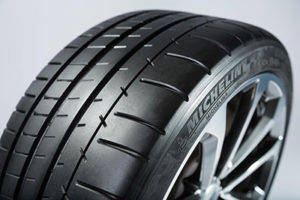 By Josh Cosford
By Josh Cosford
Seals are like car tires. They’re both absolutely essential to the operation of their respective accompaniment, yet are unappreciated by most, unless you’re a race car driver or fluid power engineer. And just like tires, seals used in fluid power have changed only by quantum leaps (the real use of the expression, which describes the infinitesimal change in orbit of an electron, rather than a giant leap).
Believe it or not, today’s all-season tire found on a Toyota Sienna can outperform and outlast the best racing tires of the 1970s. Each generation of tire has allowed for a steady progression of improved traction, wear rate, ride quality, handling and temperature stability. Today’s “extreme performance” tire category can out-corner a racing slick from a decade ago, yet perform better in the rain than any all-season tire ever made. On top of that, they can last you 30,000 miles to boot!
The cumulation of technological advancements allows these improvements to occur. From bias-ply to radial tires, and then synthetic rubber to advanced volcanizing techniques, these have all added up to a point where minivans can now literally beat the average late 60s muscle car both down the strip and at the road course.
The evolution of the fluid power seal has been slow, yet has been key to the advancement of hydraulic components. Any new hydraulic cylinder, for example, will work just fine with leather seals … at least for a short period, and at limited pressure. Every one of the small leaps in seal technology has resulted in similar leaps on pressure capacity and reliability.
From the use of rubber seals to Buna nitrile, and then to urethanes and once again exotic versions like the Freudenberg AU 3000 polyurethane compound, which can handle temperature and pressure extremes not possible with previous polymers, have all contributed to today’s efficient and powerful components. But once again, the difference of each change is small, and piggybacks previous technologies, like CNC machining of seals.
Sealing technology must absolutely continue to evolve if hydraulics is to remain relevant. Although it’s possible that electrical machines will one day replace hydraulic machines in the factory setting, there is little chance they will replace hydraulic mobile machinery. The power density advantage of fluid power is just too strong to consider electrics at this point in history, but electric technology is advancing as fast as our knowledge of quantum physics.
I don’t know what the future holds for fluid power sealing technology, but it must absolutely ensure the power density of hydraulics continues to rise. In discussions with electric crusaders, I often mention the electromagnetic force possible of being created is capped when complete atomic polarization of the conductor occurs. However, pressure in a fluid is capped only when—I don’t know—a black hole collapses? I’m excited to see where the unsung hero of fluid power can take us in the future: the seal.


Leave a Reply